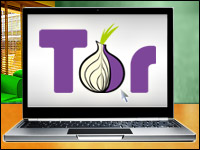
The current economic recession may be pummeling companies around the globe, but amid all the dire reports and grim statistics littering what can only be compared to a bloody battlefield, one oft-cited exception appears to be still standing tall: free and open source software.
That’s what the common discourse seems to suggest, at least, and there’s some anecdotal evidence to support it.
For its fiscal quarter ending May 31, for example, Red Hat reported an 11 percent increase in revenue over that earned in the same quarter a year ago. A few months later, it became the first Linux company to join the S&P 500.
More stories of growth can be seen in other FOSS vendors as well — including SugarCRM and Vyatta, to name just two — even as their counterparts in other sectors have begun to hemorrhage.
The True State of FOSS
Then, of course, there’s intuition, which certainly suggests that when budgets get tight, anything that’s free — or even just less expensive — looks pretty darn good.
Yet, as compelling as that logic is — and as vivid as the anecdotes may be — what’s less frequently seen is evidence of a harder, more definitive kind. One could argue, after all, that companies like Red Hat are an exception; that most enterprises are too locked into their proprietary systems to be willing to start all over again with FOSS, cheaper though it may be in the long run.
So, which is the real state of affairs? Is FOSS really gaining ground?
‘The Numbers Are All Way Up’
“Whether you look at the volume of traffic on the Web site or the number of specific sales inquiries, the numbers are all way up,” Nick Halsey, vice president of marketing with Jaspersoft, told LinuxInsider.
It’s also increasingly common to hear customers say that while previously they were “on the fence” when weighing an open source alternative against proprietary competitors — or even leaning toward the proprietary side — “with this economy, you just can’t argue with the numbers,” Halsey noted.
Those numbers must be compelling indeed, because in the fiscal year ending Jan. 31, Jaspersoft saw sales growth of 80 percent year-over-year, he said.
The number of visitors to Jaspersoft’s Web site doubled during that time. Perhaps most telling of all, the company actually increased its headcount by 15 percent to handle the additional business it’s seen.
‘A Fairly Significant Shift’
“Between 2007 and 2008, we saw a fairly significant shift in what I’ll call the ‘attitude’ of IT toward open source and the likelihood of using it,” Michael Fauscette, group vice president for IDC’s software business solutions division, told LinuxInsider.
For example, organizations increasingly view open source software as a tool that contributes positively to the business, according to an IDC report on the topic coauthored by Fauscette and released late last year.
Large organizations — those with 100 employees or more — are most involved in open source software, the report found. Also, a full 42 percent of organizations using open source software turned to commercial vendors for support in 2008, compared with only 12 percent the year before.
‘We Saw This Really Clearly’
Several factors have driven the shift in enterprise attitudes, Fauscette explained.
First, vendors have increasingly demonstrated that they are credible and can perform to meet IT’s requirements, he noted.
“What I’ve seen — and this happens almost every time there’s an economic crisis — is that things that are around the edges of mainstream trends can get pulled in if they fit into a situation that helps the companies survive that downturn in a more effective way,” Fauscette said. “We saw this really clearly, and it was even more dramatic with cloud-based apps or SaaS.”
‘Foreign Oddity’ No More
Indeed, “open source has gone from being a foreign oddity to a lot of users to being associated with cost savings and flexibility,” Jay Lyman, an analyst for enterprise software with the 451 Group, told LinuxInsider. “I’m not surprised to hear vendors and users saying it’s increasing.”
Many organizations used to have strict guidelines regarding open source use, ranging from forbidding it in the enterprise altogether to allowing it only in certain areas.
“Now, it’s becoming almost unreasonable” to prohibit its use anywhere, Lyman noted. “If there’s an opportunity for cost savings, it shouldn’t be overlooked.”
Reaching the Stack
Open source software is also being deployed in more mainstream applications, resulting in an increased emphasis on professional support, Fauscette added.
Over the past two to three years, “if you asked a CIO, ‘Do you have an open source policy, and do you use open source in your stack?’ they would have said ‘No,'” Fauscette asserted, “but if you asked in the last year, most I’ve talked to say, ‘We’re looking at an open source policy,’ or ‘We have developed one, and are starting to use it.'”
The increased adoption of open source software has been particularly visible in middleware and applications, he noted, and in situations in which companies had compelling reasons to upgrade or replace a core system.
‘You Have So Much Choice’
Particularly for large companies, the recession has coincided with the end of the life span of many Unix applications written years ago, Amanda McPherson, vice president of marketing and developer programs with the Linux Foundation, told LinuxInsider.
As such applications come to the close of their natural life cycles, “many would have to be seriously redone for new functionality and performance” — an expensive endeavor that could be further limited by the hardware they run on, McPherson explained.
“If you go to Linux, you have so much choice on the software side and the hardware side,” she added.
A More Holistic View
A more holistic view of IT spending is further buoying open source, McPherson noted.
“It used to be that people looked just at vendor costs,” she asserted. Now labor costs and support costs are increasingly being factored in.
For example, a company running an older Unix application on a Solaris machine may be dependent on “Joe Solaris” to maintain them, McPherson said; if he leaves, it could be harder to find someone else capable of working with that older technology.
Consolidating everything to Linux on the infrastructure side, on the other hand, might enable the company to reduce its headcount or at least give it more options, she suggested.
$8.1 Billion by 2013
One result of all the positive indicators is that IDC has raised its forecast for open source three times in the last year, Fauscette noted — at a time when elsewhere it’s “lowering forecasts more rapidly than that.”
Whereas worldwide revenue from open source software was US$2.9 billion in 2008, IDC now expects it to grow by 34 percent this year to reach $3.9 billion. A compound annual growth rate of 22.4 percent will take it to $8.1 billion by 2013, according to a July report authored by Fauscette.
“The OSS market has seen a strong boost from the current economic crisis,” Fauscette concluded. “OSS is increasingly a part of the enterprise software strategy of leading businesses and is seeing mainstream adoption at a strong pace.”
Will It Last?
Of course, it’s only natural to wonder what will happen when the recession ends. Will FOSS lose its newly elevated position in the enterprise?
Most don’t think so.
For one thing, there are other trends going on besides just the recession, the Linux Foundation’s McPherson pointed out.
Consolidation is one, causing many companies to consolidate on Linux and Windows, she said. SaaS is another, and it’s “driven by Linux,” she explained.
Then, too, as Linux gains ground at the expense of proprietary market share, that will “make it harder and harder for those proprietary software packages to survive,” added McPherson. “It’s a function of mass.”
‘They Want to Be Ready’
As economic restrictions ease, current organizational use of his Jaspersoft’s community versions is likely to translate into increased conversion to paid versions, predicted Halsey.
That was basically what the first generation of open source companies experienced when the tech bubble burst back in 2001, he noted.
“In a tough economy, organizations can’t move forward on a project, but they want to be ready,” Halsey explained, adding that community versions are a good way to complete any testing and prototyping early on.
‘Not Just a Stop-Gap’
Indeed, “it’s a good time to invest in the community,” the 451 Group’s Lyman agreed. “When things do pick up, vendors will see more conversion as people scale back up.”
In the meantime, vendors are also responding with midway solutions between community versions and full subscriptions, he noted, such as per-incident support.
Financial motivations are just one factor behind the adoption of open source, observed IDC’s Fauscette.
“It’s not just a stop-gap, it’s an actual trend,” he said. “I think we’re seeing a significant shift to a more mainstream approach.”



















































